Trump has made US militarism worse
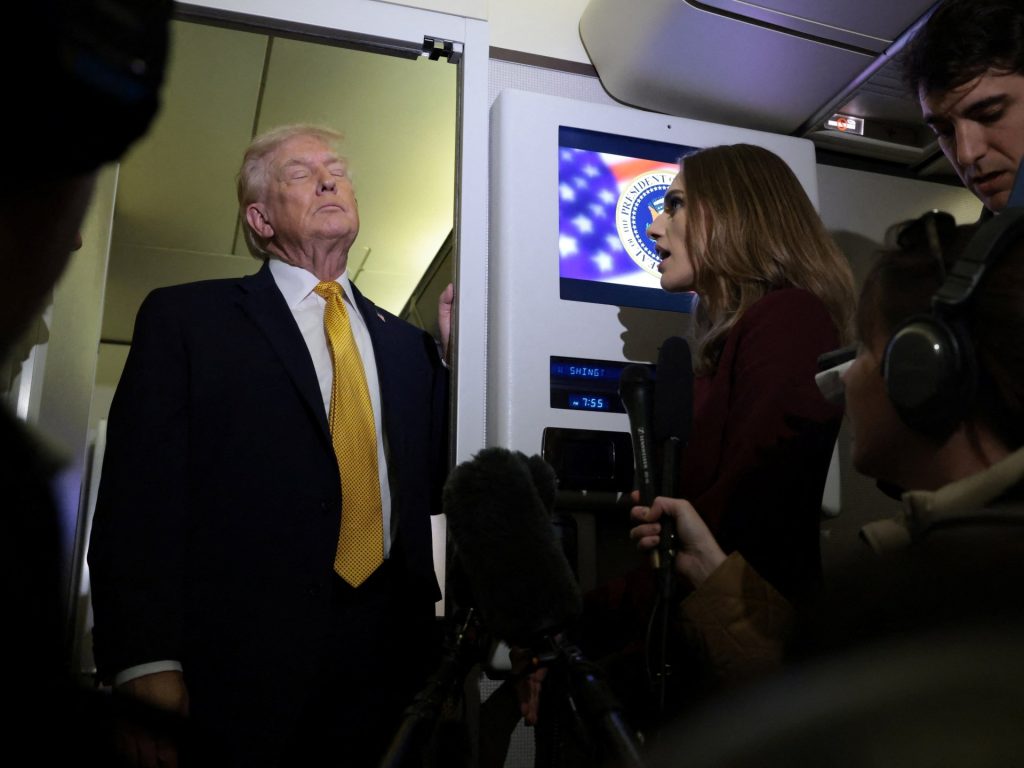
For many years before becoming president, Donald Trump publicly criticised the George W Bush administration over its decision to launch the war on Iraq. And yet, today, in his second term as president, he finds himself presiding over a military debacle that is quite reminiscent of Bush’s. Trump ordered a military intervention to remove an antagonistic foreign leader, based on a flimsy argument of national security, with the goal of accessing that country’s oil. In both cases, we see a naive confidence that the United States can simply achieve its goals through regime change. US intervention into Venezuela reeks of the same hubris that surrounded the Iraq invasion two decades ago. Yet there are also important differences to consider. The most important distinguishing feature of the operation in Venezuela is its lack of an overarching vision. On Saturday after Trump finished an hour-long news conference alongside his secretaries of defence and state, it was not clear what the plan was for Venezuela going forward, or if there was a plan at all. His statements threatening more attacks in the following days brought no clarity either. Past instances of US-led regime change fit into the larger ideological visions of the incumbent US commander-in-chief. In 1823, President James Monroe declared the Western Hemisphere off-limits to European colonialism. As the United States spent the 20th century consolidating its sphere of influence across the Americas, the Monroe Doctrine would justify various interventions in Latin America and the Caribbean. The Cold War added new justifications for the United States to overthrow leftist regimes and install friendly governments in the Americas. Advertisement As the Cold War ended, President George HW Bush sought to serve as a caretaker for a “new world order” in which the US had emerged as the world’s lone superpower. When Bush sent troops to Somalia in 1992 and his successor Bill Clinton reversed a military coup in Haiti in 1994, they did so under the paradigm of “humanitarian intervention”. When George W Bush ordered the invasion of Iraq, it was done under the umbrella of the post-9/11 “war on terror”. When President Barack Obama intervened against the forces of Libyan leader Muammar Gaddafi in 2011, he was guided by the “responsibility to protect” doctrine concerning civilians in danger. But in the case of the US attack on Venezuela, there has been no ideological justification. Trump and his team have haphazardly thrown around references to humanitarianism, counterterrorism and more to justify the attack. The president even brought up the Monroe Doctrine. But just as it seemed that he was grounding his foreign policy in a larger ideology, albeit one borrowed from two centuries ago, he made a joke of the concept. “The Monroe Doctrine is a big deal,” Trump explained on Saturday. “But we’ve superseded it by a lot, by a lot. They now call it the Donroe Doctrine.” Trump did not make up this pun; it was used by the New York Post a year ago to describe Trump’s aggressive foreign policy as he threatened to annex Canada, Greenland and the Panama Canal. The president’s decision to embrace the tongue-in-cheek term illustrates a disturbing reality of his foreign policy: Any notion that he is promoting an ideological vision is a joke. The truth is Trump is pursuing an increasingly aggressive and militaristic foreign policy in his second term, not because he wants to impose a grand vision, but because he has discovered he can get away with it. Striking a variety of foreign “bad guys” who have little capacity to fight back – ISIL (ISIS) affiliates in Nigeria who are “persecuting” Christians and “narcoterrorists” in Latin America – appeals to members of Trump’s base. After he mentioned the Venezuelan gang Tren de Aragua during Saturday’s news conference, he went on a minutes-long tangent to brag about his military interventions into US cities. While the president’s inability to stay on topic may be concerning for those questioning his health and mental fitness, this digression into domestic affairs had some relevance for his Venezuelan intervention, at least as far as he was concerned: His increasingly militarised war on drugs and crime abroad justifies an increasingly militarised war on drugs and crime at home. Advertisement Past presidents have used US power to pursue a wide variety of ideologies and principles. Trump appears to be paying lip service to past ideologies to justify the use of US power. Many times, the “good” intentions of previous presidents paved the way to hellish outcomes for the peoples who found themselves on the receiving end of US intervention. But those intentions at least created a level of predictability and consistency for the foreign policies of various US administrations. Trump, by contrast, seems driven solely by immediate political concerns and short-term prospects for glory and profit. If there is a saving grace of such an unprincipled foreign policy, it may be the ephemeral nature of interventions conducted without an overarching vision. An unprincipled approach to military intervention does not foster the kind of ideological commitment that has led other presidents to engage in long-term interventions like the Iraq occupation. But it also means that Trump could conceivably use military intervention to settle any international dispute or to pursue any ostensibly profitable goal – say assuming control of Greenland from Denmark. Last year, he decided tariffs were a potent tool for asserting his interests and started applying them almost indiscriminately on allies and adversaries alike. Now that Trump has grown comfortable using the US military to achieve a range of goals – profit, gunboat diplomacy, distraction from domestic scandals, etc – the danger is that he will grow similarly haphazard in his use of force. That does not bode well for the US nor for the rest of the world. At a time when multiple global crises are overlapping – climate, conflict and impoverishment – the last thing the world needs is a trigger-happy superpower without a clear strategy or a day-after plan. The views expressed in this article are
Nigeria vs Mozambique: AFCON 2025 – team news, start time and lineups
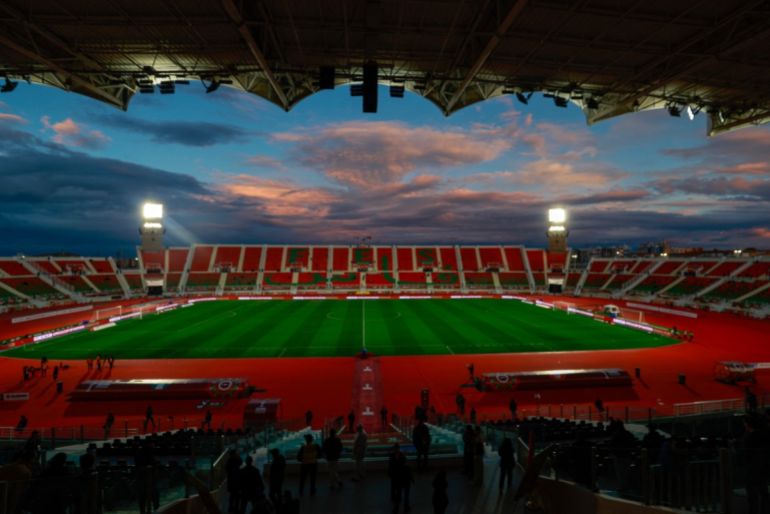
Who: Nigeria vs MozambiqueWhat: CAF Africa Cup of NationsWhere: Fez Stadium in Fez, MoroccoWhen: Monday at 8pm (19:00 GMT)How to follow: We’ll have all the build-up on Al Jazeera Sport from 16:00 GMT in advance of our text commentary stream. Fun, flair and fragility sum up Nigeria’s ongoing campaign at AFCON 2025. Recommended Stories list of 3 itemsend of list As the tournament’s leading attacking force, Nigeria have laid down an early marker as title contenders but while the West Africans boast impressive squad depth, they still need to shore up a leaky defence. The Super Eagles have moved on swiftly from the heartbreak of missing out on the FIFA World Cup and have been flying high in Morocco on the back of a talented squad featuring Ademola Lookman, Raphael Onyedika, Victor Osimhen and Alex Iwobi. As one of only two teams to maintain a perfect group-stage record, the former champions now face Mozambique, who for the first time advanced past the group stage, for a place in the quarterfinals. Ranked 102nd in the world, Mozambique are up for a historic knockout appearance, facing the daunting task of taking on a side ranked 74 places above them. Here’s everything you need to know about Nigeria vs Mozambique: How did Nigeria reach the round of 16? The African powerhouse soared into the knockouts as the table toppers of Group C, registering victories over Tunisia, Uganda and Tanzania. Nigeria were the first team to reach the last 16 with a 100 percent record. How did Mozambique reach the round of 16? Mozambique advanced as one of the four best third-placed sides. The Mambas lost two Group F games and won one, against Gabon, which ended their 40-year wait for a victory at the continental tournament. They are making their first appearance in AFCON’s knockout stages. Advertisement Who will the winner face in the next round? The winner of the Nigeria and Mozambique match will travel to Marrakesh to face the winner of the Algeria and Democratic Republic of the Congo match in the quarterfinal on January 10. Fez Stadium has hosted all of Nigeria’s matches so far and will also be the venue for the fixture against Mozambique [Abdel Majid Bziouat/AFP] Who are Nigeria’s best players? With two goals and two assists, forward Lookman has been one of Nigeria’s standout players at the tournament. The 28-year-old was the architect of the team’s victories in their opening two games, equally influential as both a playmaker and a finisher. Rested for the final group match, Lookman is expected to come out all guns blazing against their East African opponents. Midfielder Onyedika, who scored twice in the last match, is another key contributor while Iwobi has been pulling the strings in the midfield, and striker Osimhen remains one of the most feared attackers in the competition. Who are Mozambique’s best players? Winger Geny Catamo has scored two of Mozambique’s four goals at the tournament and has been central to their historic qualification. Forward Faisal Bangal and right back Diogo Calila have also found the net. Nigeria and Mozambique form guides Nigeria: W-W-W-L-L Mozambique: L-W-L-L-D Nigeria finished the group stage with eight goals, the highest tally in the competition, while also recording the highest average possession rate (66 percent). Nigeria have won all three of their group games for the first time since 2021. Mozambique’s victory over Gabon is their only win in 18 AFCON matches (D4 L13). Mozambique are yet to keep a clean sheet at AFCON, conceding in all 18 games. Head-to-head Nigeria and Mozambique have met in five previous encounters across competitive and friendly games. Nigeria dominate the head-to-head record with four wins and a draw. When did Nigeria and Mozambique last meet? The teams last met in a friendly in Albufeira, Portugal, in October 2023 when Nigeria won 3-2. Nigeria vs Mozambique – stat attack Monday’s game will be their second meeting at AFCON. Their previous AFCON encounter came in the final group game of the 2010 edition when Nigeria ran out 3-0 winners. This is Nigeria’s 16th successive appearance in the knockout rounds, having last failed to progress beyond the group stage in 1982. Have Nigeria ever won an AFCON title? Nigeria are three-time AFCON champions, having lifted the trophy in 1980, 1994 and 2013. They also finished as runners-up five times. This is their 21st appearance at the continental championship. Advertisement Have Mozambique ever won an AFCON title? No. This is their sixth appearance at the tournament, and the 2025 edition already marks their best finish. Nigeria team news Cyriel Dessers, who is yet to feature, and Ryan Alebiosu, who made his debut in the previous game, are both ruled out through injury. Their absence is unlikely to have a major impact because neither is a regular starter. Coach Eric Chelle could retain Onyedika in midfield after his brace in the last game, which earned him the player of the match award. Nigeria’s predicted lineup Stanley Nwabili (goalkeeper); Bright Osayi-Samuel, Semi Ajayi, Calvin Bassey, Bruno Onyemaechi; Samuel Chukwueze, Wilfred Ndidi, Onyedika, Iwobi; Osimhen, Lookman Mozambique team news Mozambique will be without Calila, who was taken off in the last game after only 15 minutes due to an injury. Nene, who scored an own goal against Cameroon, is also injured. Mozambique’s predicted lineup Ivane Urrubal (goalkeeper); Infren Nani, Mexer, Reinildo Mandava, Bruno Langa; Guima, Manuel Kambala; Catamo, Elias Pelembe, Witi; Bangal Adblock test (Why?)
UN General Assembly president on war, vetoes and UN reform
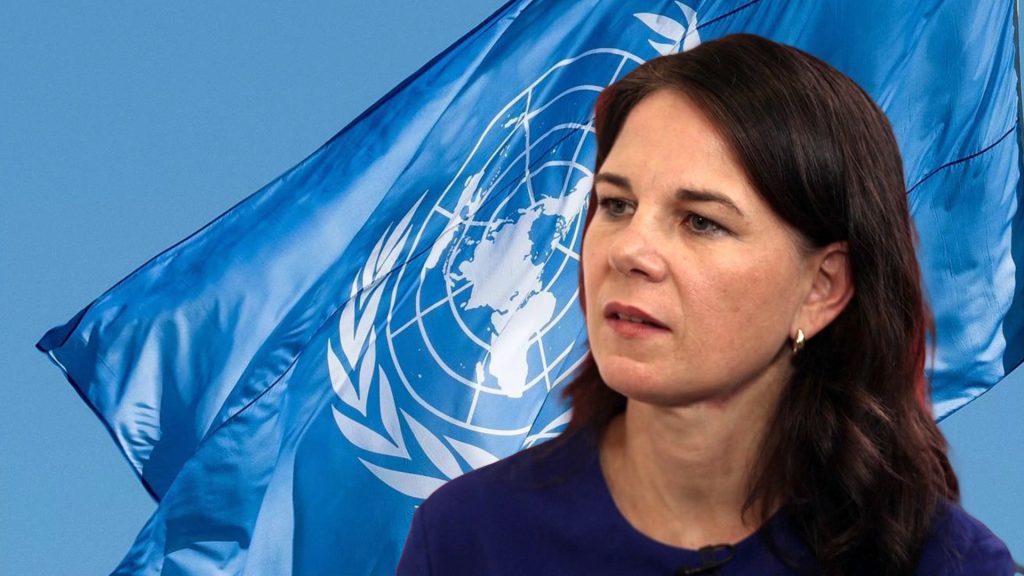
As global crises multiply and trust in international institutions erodes, the United Nations faces growing questions about its relevance and authority. Thirty years after pledges to end hunger and reduce inequality, progress is stalling, wars are spreading, and UN Security Council vetoes are paralysing action. In this episode of Talk to Al Jazeera, UN General Assembly President Annalena Baerbock reflects on the UN’s credibility, the limits of the UNSC, and whether a more assertive UNGA can drive reform before the 2030 Sustainable Development Goals deadline. Published On 4 Jan 20264 Jan 2026 Click here to share on social media share2 Share Adblock test (Why?)
LIVE: South Africa vs Cameroon – AFCON 2025

blinking-dotLive MatchLive Match, Follow the build-up, analysis and live text commentary of the game as South Africa face Cameroon in a last-16 showdown. Published On 4 Jan 20264 Jan 2026 Click here to share on social media share2 Share Adblock test (Why?)
Jake Paul loses WBA cruiserweight ranking after loss to Anthony Joshua

Jake Paul’s defeat by Anthony Joshua in their heavyweight bout in December has seen American boxer lose his WBA ranking. Published On 3 Jan 20263 Jan 2026 Click here to share on social media share2 Share Jake Paul has slipped out of the WBA cruiserweight rankings after the YouTuber-turned-boxer was soundly beaten by former world heavyweight champion Anthony Joshua last month. Paul’s jaw was broken in two places and the American needed surgery to repair the damage after Joshua’s sixth-round knockout victory in a heavyweight bout in Miami. Recommended Stories list of 4 itemsend of list The event had drawn criticism ahead of the bout due to the disparity in the sheer size and experience of the boxers, while Paul spent much of the fight dancing around the ring rather than engaging Joshua. Paul (12-2, 7 KOs) had entered the WBA’s cruiserweight rankings at No 14 in July shortly after he beat 39-year-old Julio Cesar Chavez Jr by unanimous decision in Anaheim, California. He was at No 15 entering the bout against Joshua. Bosnia’s Edin Puhalo has taken Paul’s place in the top 15, having recorded his 29th career win in December. The WBA ranking announcement and changes were for the period ending December 31. Adblock test (Why?)
Indonesia hire former Canada coach Herdman to replace Kluivert

Former Canada coach John Herdman replaces Patrick Kluivert as Indonesia coach after failure to reach 2026 World Cup. Published On 3 Jan 20263 Jan 2026 Click here to share on social media share2 Share Indonesia has hired former Canada coach John Herdman to lead the men’s national team after it failed to qualify for the 2026 FIFA World Cup. The 50-year-old Englishman replaces Patrick Kluivert, who left as coach in October. Recommended Stories list of 4 itemsend of list The Indonesian football federation said Saturday that Herdman is “not just a coach, but a football architect with a strong track record of taking teams to the World Cup”. Herdman led Canada to the 2022 World Cup after leading the women’s team to the 2015 Women’s World Cup. Indonesia, which gained independence in 1945, has not reached the World Cup since the 1938 tournament, when it was the Dutch East Indies. Herdman received a written admonishment following a Canada Soccer disciplinary committee hearing that was triggered by a drone-spying scandal at the Paris Olympics. Domestic media reported that he signed a two-year contract with an option for two more years. Herdman left his job as head coach of MLS team Toronto FC in 2024. His first task is to prepare Indonesia for the 2027 Asian Cup that will take place in Saudi Arabia. Adblock test (Why?)
US lawmakers react to attack on Venezuela, ‘capture’ of Nicolas Maduro
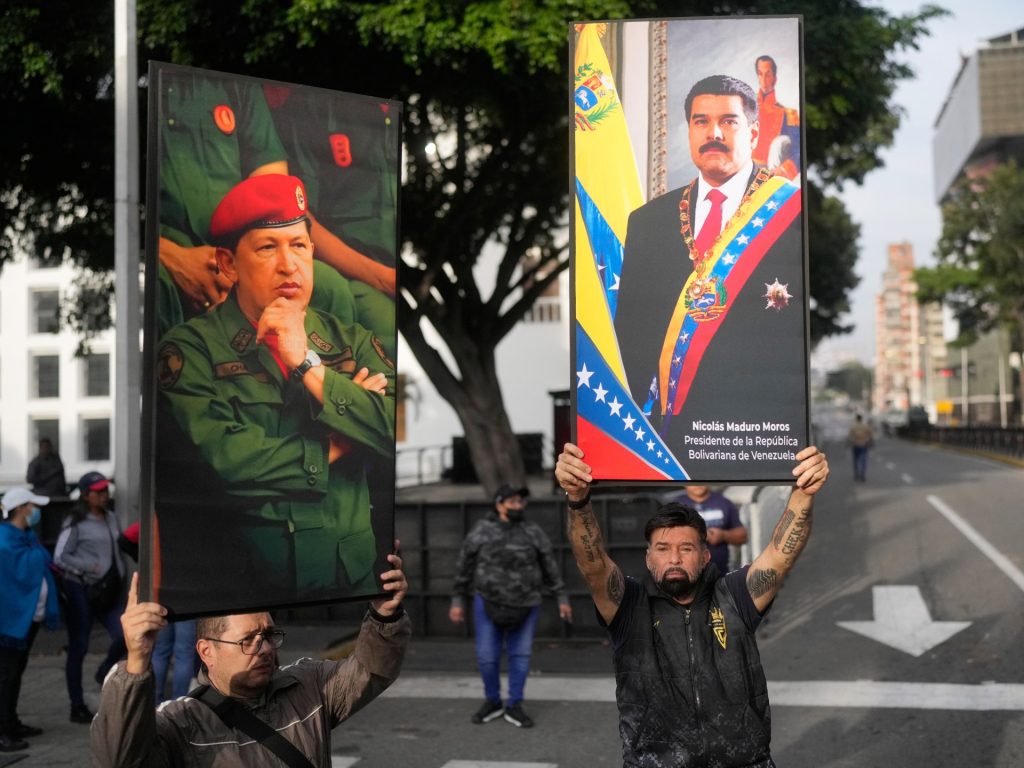
The United States’s attack on Venezuela and the purported “capture” of President Nicolas Maduro have drawn heated reactions in Washington, DC, amid months of mounting tensions between the two countries. Democratic lawmakers have largely condemned US President Donald Trump’s actions on Saturday against the South American country and its leader, saying they violate international law and lack necessary Congressional approval. Recommended Stories list of 3 itemsend of list Members of Trump’s Republican Party, meanwhile, have defended the attacks as part of the administration’s push to stem drug trafficking into the US. Here’s a look at some of the reactions from US lawmakers. Democratic Congresswoman Rashida Tlaib “Trump’s illegal and unprovoked bombing of Venezuela and kidnapping of its president are grave violations of international law and the U.S. Constitution. These are the actions of a rogue state,” Tlaib wrote on social media. “The American people do not want another regime change war abroad.” Democratic Senator Andy Kim The Democratic senator accused US Secretary of State Marco Rubio and Defense Secretary Pete Hegseth of lying when they told lawmakers during a Senate briefing last month that the US pressure campaign against Venezuela was not about regime change. “I didn’t trust them then and we see now that they blatantly lied to Congress,” Kim wrote on X. “Trump rejected our Constitutionally required approval process for armed conflict because the Administration knows the American people overwhelmingly reject risks pulling our nation into another war.” Advertisement He added that the US strike “doesn’t represent strength” and is not “sound foreign policy”. “It puts Americans at risk in Venezuela and the region, and it sends a horrible and disturbing signal to other powerful leaders across the globe that targeting a head of state is an acceptable policy for the U.S. government.” Democratic Congresswoman Betty McCollum McCollum, the ranking Democrat on the US House Appropriations Subcommittee on Defense, called on Trump to immediately halt US strikes against Venezuela. “The actions taken today by the Trump administration are blatantly illegal,” she said in a statement. “Venezuela poses no imminent national security threat to the United States and Congress has not voted to authorize any use of force in the region.” She urged Republican House Speaker Mike Johnson to call the House of Representatives back into session immediately “to rein in this out-of-control President”. Democratic Senator Reuben Gallego “This war is illegal, it’s embarrassing that we went from the world cop to the world bully in less than one year. There is no reason for us to be at war with Venezuela,” Gallego wrote on X. Democratic Congressman Jim McGovern McGovern also raised questions about the lack of Congressional oversight, saying that “without authorization from Congress, and with the vast majority of Americans opposed to military action, Trump just launched an unjustified, illegal strike on Venezuela.” “He says we don’t have enough money for healthcare for Americans—but somehow we have unlimited funds for war??” the Democratic lawmaker wrote on X. Republican Senator Tom Cotton Cotton, a top Trump ally in Congress, hailed the US president as well as US troops and law enforcement officers for an “incredible operation”. “Nicolas Maduro wasn’t just an illegitimate dictator; he also ran a vast drug-trafficking operation. That’s why he was indicted in U.S. court nearly six years ago for drug trafficking and narco-terrorism,” Cotton wrote on X. He said he spoke with Rubio, the US secretary of state, who confirmed that Maduro was in US custody and “will face justice for his crimes against our citizens”. Cotton then appeared to threaten the interim government in Venezuela, saying it needed to “decide whether to continue the drug trafficking and colluding with adversaries like Iran and Cuba or whether to act like a normal nation and return to the civilized world”. “I urge them to choose wisely,” Cotton wrote. Republican Senator Mike Lee Lee, who had been critical of the Trump administration’s pressure campaign against Venezuela, said Rubio told him that Maduro had been arrested “to stand trial on criminal charges” in the US. Advertisement Lee also wrote on social media that Rubio told him the US military action in Venezuela “was deployed to protect and defend those executing the arrest warrant”. “This action likely falls within the president’s inherent authority under Article II of the Constitution to protect U.S. personnel from an actual or imminent attack,” Lee said in a post on X. Republican Senator Rick Scott The Florida senator said “the strikes against and capture of narco-terrorist Nicolas Maduro” were conducted “with a level of professionalism and precision”. He said they also send a message to the world that Trump “is a man of his word, and the United States will not tolerate terrorists.” “Maduro was indicted in a U.S. Court and was told to stop sending drugs into our country to kill our kids and grandkids, but he refused. This is peace through strength on full display. Today, America and the world are a safer place,” Scott wrote on X. US Vice President JD Vance Vance said that the operation to “capture” Maduro shows that Trump “means what he says”. “The president offered multiple off ramps, but was very clear throughout this process: the drug trafficking must stop, and the stolen oil must be returned to the United States,” Vance said on social media. Before Saturday’s attacks, senior Trump administration officials had said Venezuela’s oil belongs to Washington, falsely describing the nationalisation of the South American country’s petroleum industry as “theft”. In his X post, Vance also addressed the experts, world leaders and US lawmakers who have denounced the administration’s actions against Venezuela as illegal. “And PSA for everyone saying this was ‘illegal’: Maduro has multiple indictments in the United States for narcoterrorism. You don’t get to avoid justice for drug trafficking in the United States because you live in a palace in Caracas,” the US vice president said. Adblock test (Why?)
Russia-Ukraine war: List of key events, day 1,409

These are the key developments from day 1,409 of Russia’s war on Ukraine. Published On 2 Jan 20262 Jan 2026 Click here to share on social media share2 Share Here is where things stand on Saturday, January 3: Fighting Two people were killed, including a three-year-old child, and at least 31 people were wounded in a Russian ballistic missile attack on a five-storey residential building in the centre of Ukraine’s Kharkiv, the region’s governor Oleh Syniehubov wrote on Telegram. Russia’s Ministry of Defence denied responsibility for the attack, claiming it was caused by the detonation of Ukrainian ammunition and was meant as a distraction from a deadly attack the day before on the village of Khorly, in a Russian-occupied part of the Kherson region. The death toll from the drone strike on a hotel and cafe in Khorly rose to 28 people, the region’s Russian-installed governor, Vladimir Saldo, told Russia’s state-run TASS news agency. Saldo also said that more than 60 people were injured in the attack. Ukraine has responded to the strike by saying it does not target civilians. Ukraine’s Deputy Prime Minister Oleksii Kuleba said in a post on Facebook that Ukrainian authorities have decided to evacuate more than 3,000 children, along with their parents, from 44 front-line settlements in Ukraine’s Zaporizhia and Dnipropetrovsk regions due to Russian aggression. A Ukrainian attack on the electricity grid in the Russian-occupied Zaporizhia region of Ukraine left 1,777 households without power, Russian-installed regional governor, Yevgeniy Balitsky, wrote on Telegram. Russian forces shot down 64 Ukrainian drones overnight into Friday, Russia’s Defence Ministry said, according to TASS. Ukrainian monitoring site DeepState reported Russian forces seized more land in the Myrnohrad and Pokrovsk areas of Ukraine’s Donetsk region, as well as in Svitle in the Ternopil region. The Russian army captured more than 5,600 square kilometres (2,160 square miles), or nearly 1 percent, of Ukrainian territory in 2025, according to an analysis of data from the Institute for the Study of War (ISW), which works with the Critical Threats Project. According to the AFP news agency, the land seized by Russian forces last year was more than in the previous two years combined, but less than the 60,000sq km (23,166sq miles) Russia took in 2022, the first year of its all-out invasion. Advertisement Politics and diplomacy Ukrainian President Volodymyr Zelenskyy named Ukraine’s military intelligence chief Kyrylo Budanov as his presidential chief of staff on Friday, in the latest Ukrainian leadership shake-up. Zelenskyy also nominated Mykhailo Fedorov, a drone and digitalisation specialist who has served as first deputy prime minister and minister of digital transformation, as defence minister. Fedorov, whose appointment must be approved by parliament, will replace Denys Shmyhal, a former prime minister who was being offered a new government post. RecepTayyip Erdogan, the president of Turkiye, told reporters in Istanbul that he would hold a phone call with United States President Donald Trump on Monday to discuss peace efforts. Turkiye has been hosting intermittent peace talks during Russia’s war on Ukraine. Erdogan also said Turkiye’s Foreign Minister Hakan Fidan will attend a meeting of the “coalition of the willing”, a group of nations backing Ukraine, in Paris, in the coming days. Adblock test (Why?)
Iran urges UN to respond to Trump’s ‘reckless’ threats over protests

Letter to UN chief, UNSC comes after Trump says US will intervene if Tehran violently suppresses protests. Published On 3 Jan 20263 Jan 2026 Click here to share on social media share2 Share Iran’s United Nations ambassador Amir Saeed Iravani has written to the UN secretary-general and the president of the UN Security Council (UNSC), urging them to condemn “unlawful threats” towards Tehran from United States President Donald Trump amid ongoing protests in the country. The letter sent on Friday came hours after Trump said the US was “locked and loaded and ready to go” if any more protesters were killed in the ongoing demonstrations in Iran over the cost of living. Recommended Stories list of 4 itemsend of list Iravani called on UN chief Antonio Guterres and members of the UNSC to “unequivocally and firmly condemn” Trump’s “reckless and provocative statements”, describing them as a “serious violation” of the UN Charter and international law. “Any attempt to incite, encourage or legitimise internal unrest as a pretext for external pressure or military intervention is a gross violation of the sovereignty, political independence and territorial integrity of the Islamic Republic of Iran,” Iravani said in the letter, which was published in full by the IRNA state news agency. The letter added that Iran’s government “reiterates its inherent right to defend its sovereignty” and that it will “exercise its rights in a decisive and proportionate manner”. “The United States of America bears full responsibility for any consequences arising from these illegal threats and any subsequent escalation of tensions,” Iravani added. IRNA reported earlier that protests continued across Iran on Friday, with people gathering in Qom, Marvdasht, Yasuj, Mashhad, and Hamedan as well as in the Tehran neighbourhoods of Tehranpars and Khak Sefid. Advertisement The protests have swept across the country after shopkeepers in Iran’s capital Tehran went on strike on Sunday over high prices and economic stagnation. At least nine people had been killed and 44 arrested in the unrest. The deputy governor of Qom province on Friday said that another person had died after a grenade exploded in his hand, in what the governor said was an attempt to incite unrest. In his post on Truth Social, Trump said that if Iran “violently kills peaceful protesters, which is their custom, the United States of America will come to their rescue”. Ali Larijani, secretary of the Supreme National Security Council, shot back that US interference “is equivalent to chaos across the entire region and the destruction of American interests”. Iran’s economic woes, including a collapsing currency and high inflation rates, follow years of severe drought in Tehran, a city with a population of some 10 million people, compounding multiple ongoing crises. Iranian leaders have struck a surprisingly conciliatory tone in response, with President Masoud Pezeshkian saying the government is at “fault” for the situation and promising to find solutions. Observers have noted the response is markedly different from the harsh reaction to past protests in the country. The United States bombed three Iranian nuclear sites in June this year during a 12-day escalation between Israel and Iran. Trump described the operation as a “very successful attack”. Last week, during a news conference with Israeli Prime Minister Benjamin Netanyahu, Trump said the US will “knock the hell out” of Iran if it advances its nuclear programme or ballistic weapons programme. The statement came amid an Israeli push to resume attacks on Iran. Pezeshkian has pledged a “severe” response to any aggression. Adblock test (Why?)
UN chief Guterres calls on Israel to reverse NGO ban in Gaza, West Bank
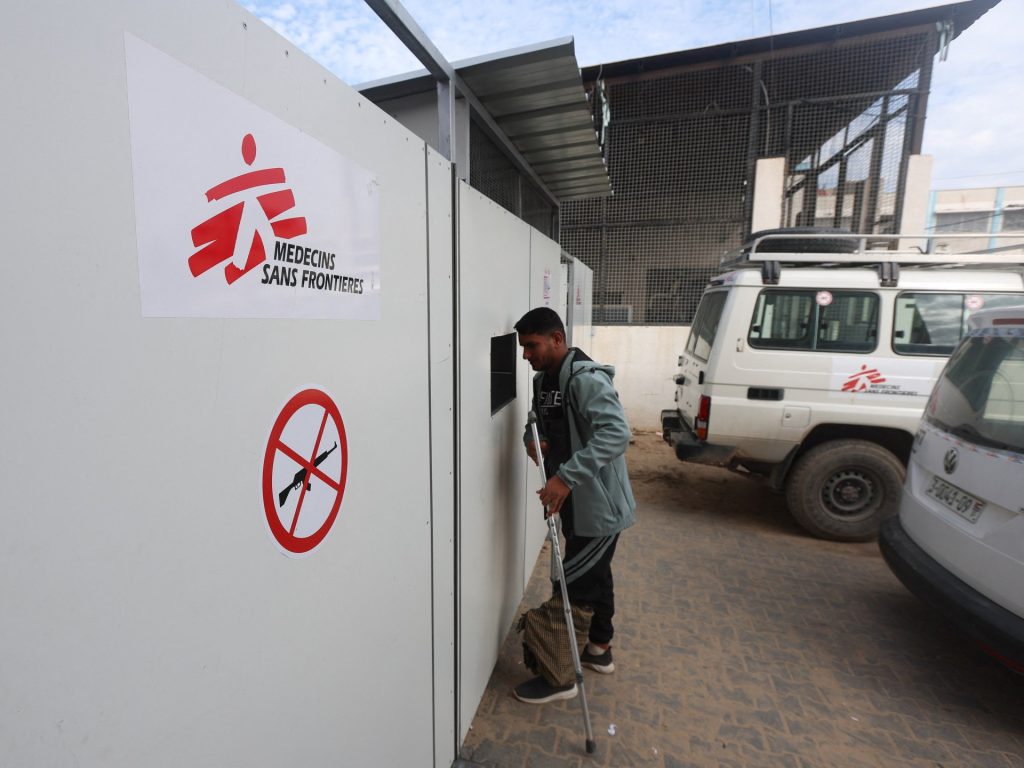
Guterres says pending ban targets groups ‘indispensable to life-saving’ work, undermines ceasefire progress. United Nations Secretary-General Antonio Guterres has called on Israel to reverse a pending ban on 37 nongovernmental organisations (NGOs) working in Gaza and the occupied West Bank. In a statement on Friday, Guterres called the work of the groups “indispensable to life-saving humanitarian work”, according to spokesperson Stephane Dujarric. He added that the “suspension risks undermining the fragile progress made during the ceasefire”. Recommended Stories list of 3 itemsend of list Israel banned the humanitarian groups for failing to meet new registration rules requiring aid groups working in the occupied territory to provide “detailed information on their staff members, funding and operations”. It has pledged to enforce the ban starting March 1. Experts have denounced the requirements as arbitrary and in violation of humanitarian principles. Aid groups have said that providing personal information about their Palestinian employees to Israel could put them at risk. The targeted groups include several country chapters of Doctors Without Borders (known by its French acronym, MSF), the Norwegian Refugee Council, and the International Rescue Committee. To date, Israel has killed about 500 aid workers and volunteers in Gaza throughout its genocidal war. All told, at least 71,271 Palestinians have been killed in Gaza since October 7, 2023. In his statement, Guterres said the NGO ban “comes on top of earlier restrictions that have already delayed critical food, medical, hygiene and shelter supplies from entering Gaza”. “This recent action will further exacerbate the humanitarian crisis facing Palestinians,” he said. Advertisement Nearly all of Gaza’s population has been displaced throughout the war, with many still living in tents and temporary shelters. Israel had maintained severe restrictions on aid entering the enclave prior to a ceasefire going into effect in October. Under the deal, Israel was meant to provide unhindered aid access. But humanitarian groups have said Israel has continued to prevent adequate aid flow. Ongoing restrictions include materials that could be used to provide better shelter and protection from flooding amid devastating winter storms, according to the UN. Earlier on Friday, the foreign ministers of Qatar, Egypt, Jordan, Saudi Arabia, the United Arab Emirates, Turkiye, Pakistan and Indonesia warned that “deteriorating” conditions threatened to take even more lives in Gaza. “Flooded camps, damaged tents, the collapse of damaged buildings, and exposure to cold temperatures coupled with malnutrition, have significantly heightened risks to civilian lives,” they said in a statement. They called on the international community “to pressure Israel, as the occupying power, to immediately lift constraints on the entry and distribution of essential supplies including tents, shelter materials, medical assistance, clean water, fuel, and sanitation support”. Adblock test (Why?)

